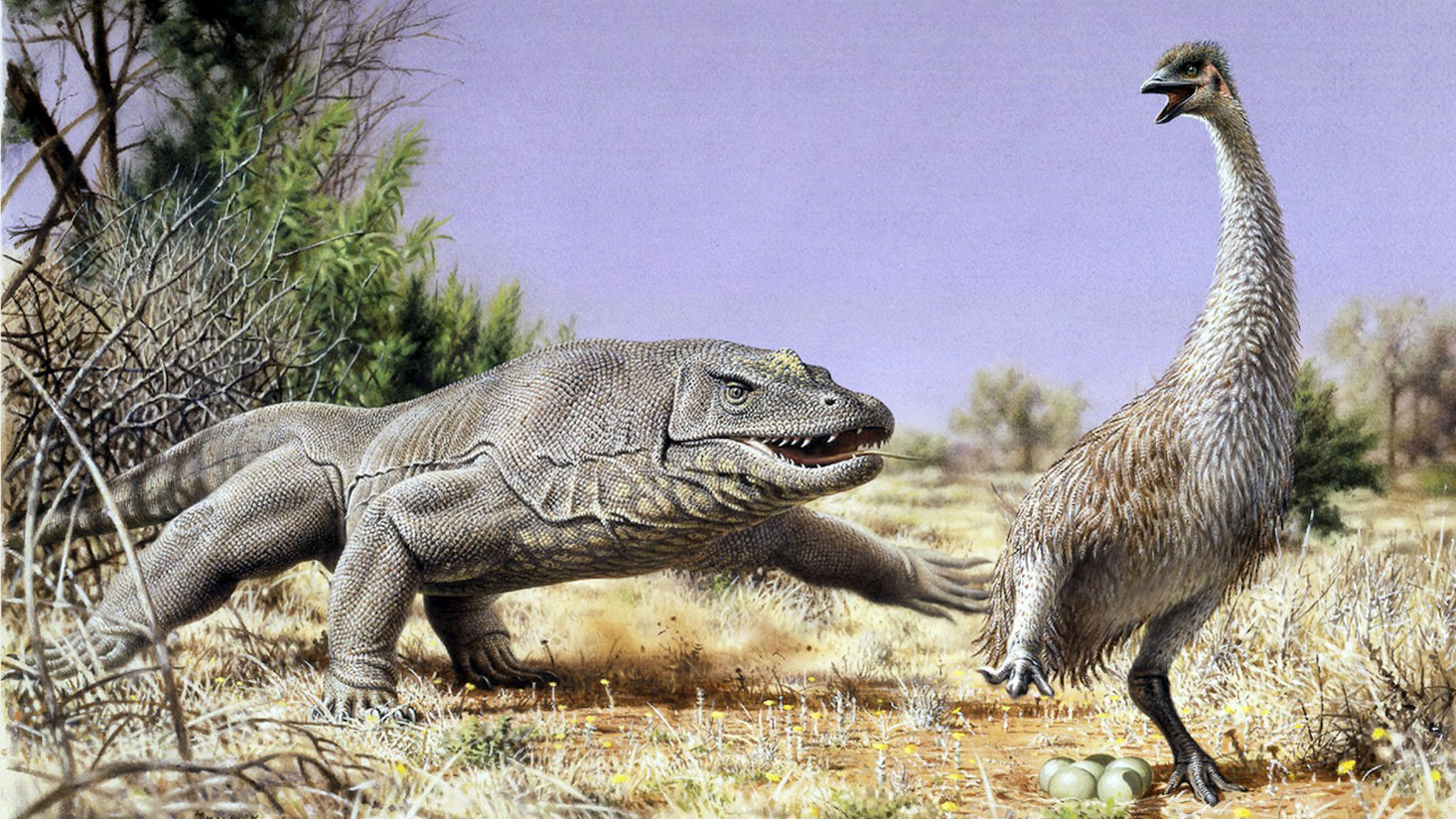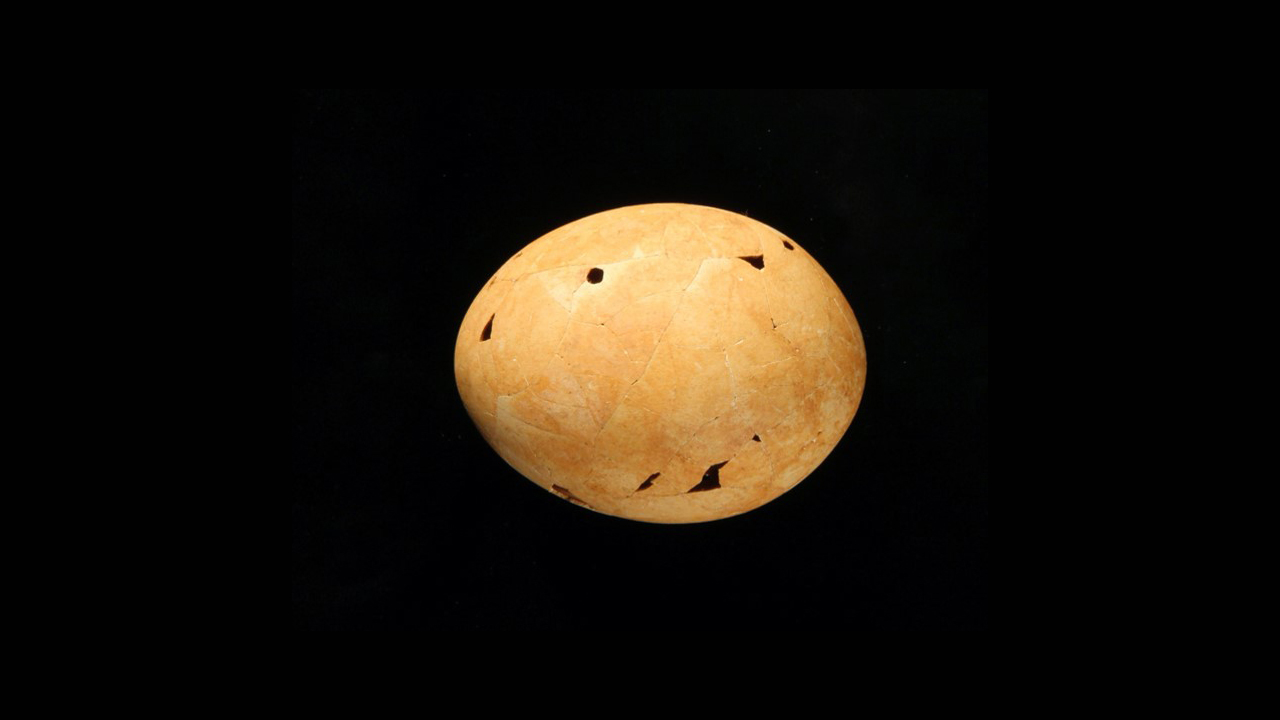'Demon ducks of doom' laid melon-size eggs in prehistoric Australia
Scientists crack a 41-year-old mystery about prehistoric eggs.

Scientists have finally cracked a 41-year-old mystery about an ancient eggshell from a large, extinct terrestrial bird with a demonic nickname.
In 1981, researchers in Australia discovered the charred remnants of numerous eggs from several cooking fires used by prehistoric humans, dating to about 50,000 years ago. Some of the eggs were identified as those of emus. But a few oversized specimens belonged to a second, unknown bird. For years, scientists argued about the identity of that large bird. But given the eggs' size and age, over time, two contenders emerged: Progura, a group of large turkey-like birds, or Genyornis, sometimes referred to as "demon ducks of doom" because of their huge size and evolutionary relation to the smaller waterfowl.
Now, a new analysis using sophisticated protein sequencing technology and artificial intelligence has put the debate to rest. The results, which were published May 24 in the Proceedings of the National Academy of Sciences, firmly establish the eggs' identity as Genyornis newtoni, Australia's last "thunder bird."
Related: Towering 'terror bird' stalked prey by listening for footsteps
Genyornis newtoni was an intimidating creature. It stood over 6.5 feet (2 meters) tall and tipped the scales at up to 530 pounds (240 kilograms) of beak, bones and feather-clad muscle, according to the Australian Museum. "I can imagine that having this mega duck looking down at one should be fairly unnerving!" lead study author Beatrice Demarchi, an archaeologist studying bones and other organic materials at the University of Turin in Italy, told Live Science in an email.
Fittingly, these mega ducks also laid large eggs; each weighed around 3.5 pounds (1.6 kg), about the size of a melon. Genyornis' huge eggs would have been an ideal source of protein for Indigenous Australian people, provided they could safely collect them from the big birds' nests. In fact, the scientists now suspect that humans' appetite for the melon-size eggs may have helped drive Genyornis to extinction, according to The Natural History Museum, London.

While bits of fossilized egg might not be as flashy as a fossilized skull, "small and mundane things such as eggshells can reveal a lot about what the environment looked like," said Demarchi. Curiosity about that ancient environment drove researchers to re-examine shell fragments that were discovered in the 1980s at two Australian sites , using a different technique: protein sequencing.
Sign up for the Live Science daily newsletter now
Get the world’s most fascinating discoveries delivered straight to your inbox.
When scientists are trying to identify a particular species, DNA sequencing is usually preferred over protein sequencing. Proteins don't mutate as quickly or as randomly as DNA does, which means that their genetic signatures are more challenging to detect. "However, they last about 10 times longer than DNA," which means that there might be ample proteins preserved in older material in which much of the DNA has eroded over time, Demarchi said. Given the age and the burial temperature of the eggshell fragments (which had been cooked over an open flame), most of the DNA in the egg samples was too degraded to be useful. The proteins, however, were still in relatively good shape.
After sequencing these molecules and determining which genes would have produced them, the researchers used a special algorithm to compare their findings to the genomes of more than 350 living species of birds. The results revealed that the eggs were not laid by a group of large-footed chicken-like birds called megapodes, and therefore did not belong to the Progura genus, study co-author Josefin Stiller, an evolutionary biologist at the University of Copenhagen in Denmark, said in a statement.
Research such as this offers valuable insights into humans' impact on the natural world, showing that where our ancestors lived and what they ate may have contributed to the extinction of certain species. Although the so-called demon ducks are no longer around, the lessons from our past interactions with them continue to resonate. Demarchi and her colleagues hope to continue their work "looking at other big birds from the past and working out their relationships with people at different points in time," Demarchi said.
Originally published on Live Science.

Joanna Thompson is a science journalist and runner based in New York. She holds a B.S. in Zoology and a B.A. in Creative Writing from North Carolina State University, as well as a Master's in Science Journalism from NYU's Science, Health and Environmental Reporting Program. Find more of her work in Scientific American, The Daily Beast, Atlas Obscura or Audubon Magazine.









